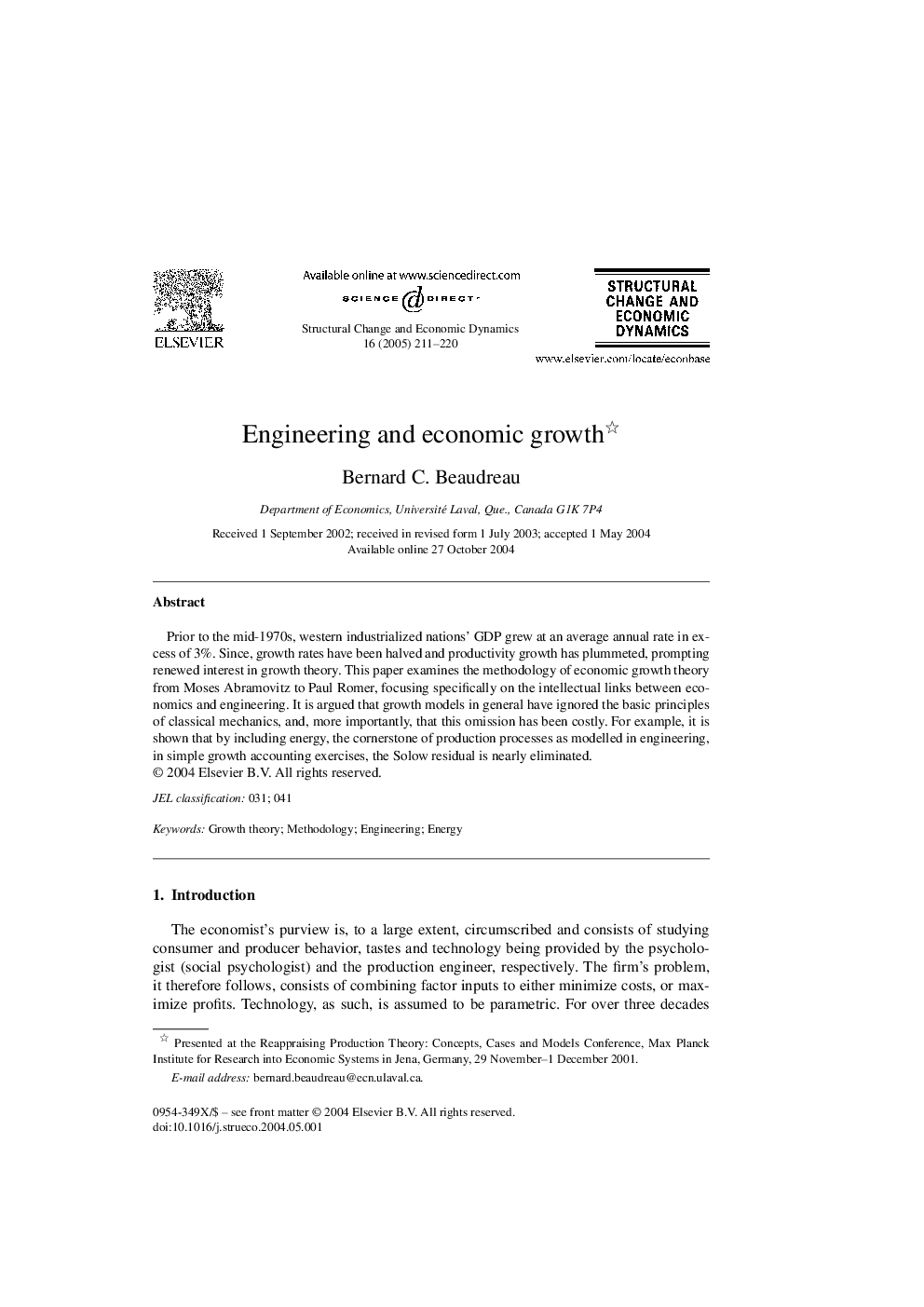| Article ID | Journal | Published Year | Pages | File Type |
|---|---|---|---|---|
| 10484573 | Structural Change and Economic Dynamics | 2005 | 10 Pages |
Abstract
Prior to the mid-1970s, western industrialized nations' GDP grew at an average annual rate in excess of 3%. Since, growth rates have been halved and productivity growth has plummeted, prompting renewed interest in growth theory. This paper examines the methodology of economic growth theory from Moses Abramovitz to Paul Romer, focusing specifically on the intellectual links between economics and engineering. It is argued that growth models in general have ignored the basic principles of classical mechanics, and, more importantly, that this omission has been costly. For example, it is shown that by including energy, the cornerstone of production processes as modelled in engineering, in simple growth accounting exercises, the Solow residual is nearly eliminated.
Related Topics
Social Sciences and Humanities
Economics, Econometrics and Finance
Economics and Econometrics
Authors
Bernard C. Beaudreau,
